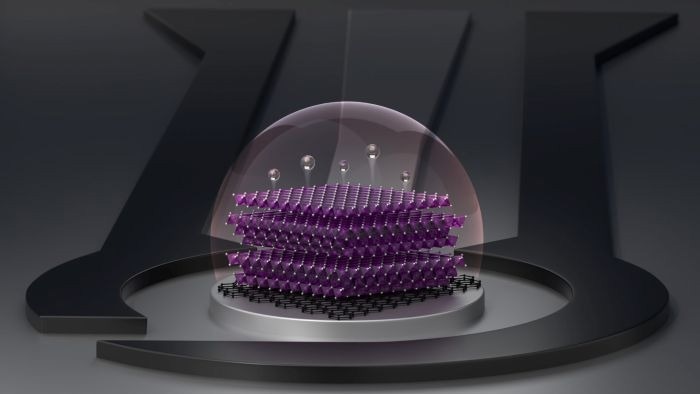A multidisciplinary team at KAUST has developed an electrochemical sensor to tackle a widespread health issue - vitamin D deficiency - that disproportionately affects people in the Middle East and North Africa (MENA). This compact device detects low levels of vitamin D in blood samples, offering an early warning system for a deficiency that, if left unaddressed, can lead to serious health problems.
 A new highly sensitive electrochemical sensor, combining MXene 2D nanomaterials with vitamin D-selective antibodies, enables low-cost, rapid, and decentralized vitamin D detection in blood. Image Credit: 2025 KAUST
A new highly sensitive electrochemical sensor, combining MXene 2D nanomaterials with vitamin D-selective antibodies, enables low-cost, rapid, and decentralized vitamin D detection in blood. Image Credit: 2025 KAUST
Vitamin D deficiency can result in broad health complications including cardiovascular disease, autoimmune disorders, neurodegenerative diseases and skeletal deformities. Early diagnosis of vitamin D deficiency is crucial.
Sharat Chandra Barman, Postdoctoral Researcher, King Abdullah University of Science and Technology
Although the body naturally produces vitamin D through sun exposure, people in hotter climates often avoid direct sunlight, limiting this natural source.
Despite ample sunshine in Saudi Arabia and the MENA region, the prevalence of vitamin D deficiency is alarmingly high, making it a critical and often overlooked public health challenge.
Dana Alsulaiman, Study Co-Leader and Assistant Professor, Material Science and Engineering, King Abdullah University of Science and Technology
Vitamin D deficiency affects around 80% of the region's population, with 16% of Saudis suffering from severe deficiencies.
One of the main hurdles in addressing this issue is the difficulty of measuring vitamin D at clinically relevant levels.
“The molecule’s small size, low circulating concentrations in the blood, and its structural similarity to other biomolecules all present challenges,” stated Alsulaiman.
As a result, most current testing methods require specialized lab equipment typically only available in large medical centers.
To create a simpler, more accessible testing method, the KAUST team developed a novel electrochemical sensor using MXene-based 2D nanomaterials combined with vitamin D-specific antibodies.
“MXenes have several features that suit biosensor applications. They are biocompatible, possess excellent electrical conductivity, and their surface is covered with tunable chemical groups that can enable further device functionality to be incorporated,” explained Barman.
The team used these chemical groups to attach vitamin D-binding antibodies to the MXene surface.
“Combining MXenes with antibodies resulted in a very sensitive and highly selective material for point-of-care vitamin D detection,” stated Barman.
The team showed that when the antibodies on the device bound to vitamin D, the current flow through the biosensor dropped in a measurable way, with the size of the electrical response directly proportional to the concentration of vitamin D in the sample.
The sensor achieved a detection limit of just 1 picogram per milliliter, with a dynamic range of 0.1–500 nanograms per milliliter.
“This range effectively covers clinically relevant vitamin D levels, from deficiency to insufficiency, sufficiency, and toxicity ranges,” added Barman.
“The sensor also demonstrated high selectivity, showing minimal interference from non-target biomolecules like glucose, vitamin C, and vitamin B12,” further added Barman.
“Our synergistic combination of MXenes and antibodies enabled us to develop a biosensing platform for vitamin D deficiency that is low-cost, rapid, and decentralized – this advances accessible healthcare solutions in line with the goals of Saudi’s visionary Health Sector Transformation Program,” concluded Alsulaiman.
Journal Reference:
Barman, C, S., et al. (2025) Antibody-functionalized MXene-based electrochemical biosensor for point-of-care detection of vitamin D deficiency. Communications Materials. doi.org/10.1038/s43246-025-00756-9.